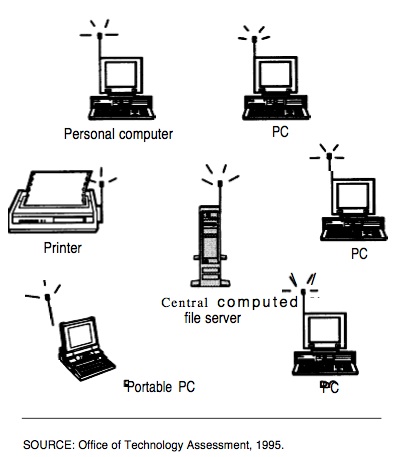Definition[]
A wireless LAN substitutes radio waves for the fiber optic or coaxial cables that connect most wire-based LANs.
Overview[]
WLANs are generally composed of two basic elements: access points and other wireless-enabled client devices, such as laptop computers. These elements rely on radio transmitters and receivers to communicate with each other. Access points are physically wired to a conventional network and provide a means for wireless devices to connect to them.
Most wireless LAN wireless modems also support direct device-to-device communication separate from the server.[1]
Wireless LANs were originally designed to substitute for wireline LANs; to be used where wires were either too costly to install or where added flexibility (to move computers easily and/or quickly) was needed. For example, many older buildings are difficult to wire for computers (or even phone lines) because of their construction or the presence of hazardous materials such as asbestos. In these cases, wireless LANs may provide a cheaper solution.
WLANs are characterized by one of the following two basic structures, referred to as infrastructure mode and ad hoc mode.
References[]
- ↑ The most prevalent WLAN technology is equipment manufactured in accordance with the IEEE 802.11 family of standards, commonly known as “Wi-Fi,” short for Wireless Fidelity.
